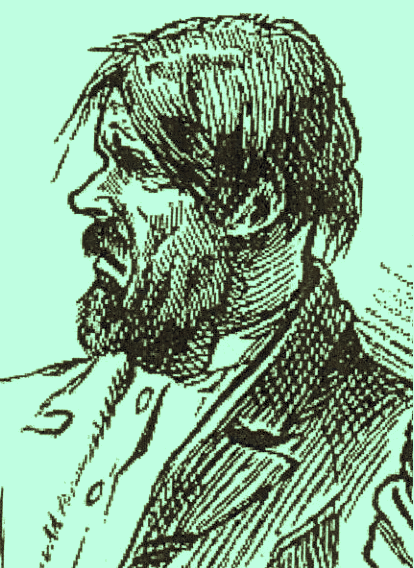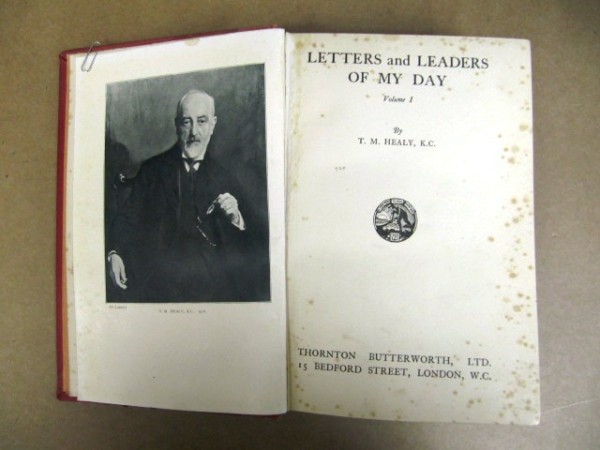 Myles Joyce (drawing from book, "Maamtrasna, the murders and the mystery.")
Nuachtáin/Newspapers
Comóradh 2012
|

Richmond Jail
"[A prison warder's] stories of the Galway prisoners there, convicted by Dublin special juries under the Crimes Act, and sentenced to death, were heartrending. He said none of them could speak English, and that they bewailed their fate in Gaelic, holding up their hands to try to make him understand. They numbered their children on their fingers, and by signs tried to show him their ages and heights. Crimes Act convictions were so common then that I did not attach special significance to his accounts. One conviction, however, was soon to have a sequel which bred rancour in British parties, and led to a political change. Foster's narratives related to men accused of the Maamtrasna murders of 1882... ..One of them, Myles Joyce, on the scaffold, vehemently protested in Gaelic his innocence. A few weeks later an English soldier stationed in Galway Jail vowed that on his rounds as sentry he saw Joyce's ghost at night. ...A startling confession was to come. A mission (or revival) took place in the parish of the informer Casey in 1884. The Archbishop of Tuam, Dr. McEvilly, unaware that anything unusual was to happen, came to give greater solemnity to the devotions. Casey entered the church unexpectedly, and after parley with the curate, publicly confessed his perjury against Myles Joyce. With a lighted candle in his hand before the astonished congregation, he owned that to save his neck he had sworn falsely. Furthermore, he declared that the real murderer was "Big Pat Casey of Bunnacric." (“Letters and leaders of my day” …T. M. Healy. New York : Frederick A. Stokes Company, 1929) |